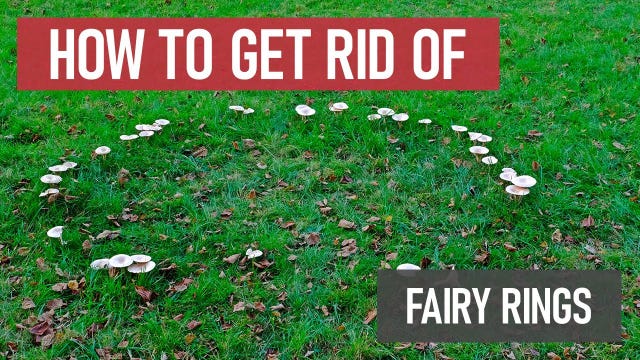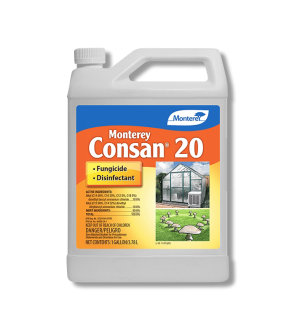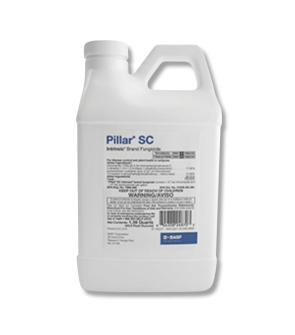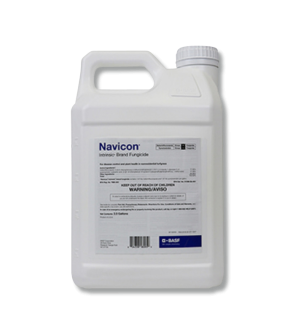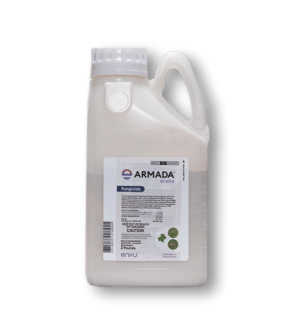Gain access to personalized product screening, the best pricing, rewards, and more!
Most Effective Products
Fairy Ring Control: How To Get Rid of Fairy Ring
This page is a general fairy ring control guide. Using the products and methods suggested, you will get control of the disease known as fairy ring. Follow this guide and use the recommended products; we guarantee 100% control of the fairy ring.
Fairy ring is the common term for a fungal disease characterized by rings of mushrooms, lush green circular bands of grass, or rings or arcs of necrotic or dead vegetation in established turfgrass. The symptoms of fairy rings can be seen at any time of year, but they often spring up during hot and dry weather periods, especially on turf that is not fed enough fertilizer.
Fairy ring is caused by a fungus found in soils called basidiomycetes and affects many lawns, parks, and sports fields. This fungal growth feeds on organic matter as it moves throughout the soil and releases nutrients on your lawn. As a result, the fairy ring appears in the form of dark green grass growing in a circular pattern. Mushrooms also grow due to the fungal growth and are a clear indicator of the fairy ring fungus on your property.
Fairy ring is not a severe lawn disease since it does not cause significant damage to a lawn, but it is more of an aesthetic issue that you might not want on your lawn if you like it to be neat and uniform.
If you have a fairy ring on your lawn, there are ways to tackle and remove the disease from your property. The following DIY guide features everything you need to treat this pesky lawn disease correctly.
Identification
Before applying chemical products, confirm that the disease on your lawn is a fairy ring and not some other fungus. Misidentification can lead to using the wrong fungicide, wasting time and money. Here are some characteristics of a fairy ring that can help you identify what it looks like and whether you have it.

- There are three types of fairy rings, which depend on your soil type, specific fungi, and environmental conditions. Fairy rings create round, circular patches of abnormal growth. They can grow as large as 15 feet in diameter, often with different textures and colors from the surrounding grass.
- Fairy ring type 1 will cause the grass to become hydrophobic, meaning water cannot properly be absorbed. As a result, the grass becomes discolored and dies out in patches, rings, or arcs.
- Type 2 Fairy Rings feature a ring of dark green grass, usually because the area has high nitrogen, which overstimulates the turf.
- The third type of fairy ring symptom is the one that produces mushrooms arranged in a circular shape. The mushrooms will have a bell-shaped cap with a knobbed top. The coloration will range from tan to reddish brown, with the stems measuring 1 to 3 inches tall. The cap width of the mushroom will be 1/2 to 2 inches. You may also find mycelial threads growing in the circle rather than the regular fruiting bodies of mushrooms.
Refer to the image above and our description to help you identify the fairy ring. If you are still not totally sure, you can contact us, and we'll help you correctly identify your issue.
Inspection
Before treating it, you must be sure you are dealing with a fairy ring and not some other plant disease. Misidentification may lead to wrong treatment methods, wasting your time and money. Some symptoms are below to help you identify the fairy ring.

Where to Inspect
Fairy rings can grow in a variety of spots, such as forests, grasslands, rangelands, lawns, and golf courses.
They can grow wherever grass is grown, trees have been removed, and where soils have high levels of organic matter, but they are commonly found in more open, grassy spaces.
What To Look For
Fairy rings can be active throughout the year but appear more often after wet weather from late summer to fall.
Look out for any of the three types of fairy ring characteristics mentioned in the identification section. The first type is brown rings of dead turf, the next is green rings of stimulated, healthy-looking grass that may be darker colored (more nutrient-rich) than your typical grass, and the last type is the presence of mushrooms.
While it is the most obvious clue that you have a fairy ring, the appearance of mushrooms may not always be visible with a fairy ring. Instead, a layer of white mycelia or a band of dry, brown-orange, or yellowish material will be present in the thatch, mat, or soil layers.
Treatment
Once you have observed the areas where the fairy ring is developing, you must immediately apply fungicides to the affected areas.
Our top recommendation for controlling fairy rings is Monterey Consan 20. This product contains the active ingredient Alkyl dimethyl benzyl ammonium chloride, which does a great job against fairy rings. It's also cost-effective and one of our more economical fungicides.
Step 1: Measure and Apply Monterey Consan 20

Determine how much Monterey Consan 20 you will need by measuring the square footage of the treatment area. To find the square footage, measure the treatment areas' length and width in feet, then multiply them together (length X width = square footage).
For lawn treatments, apply 2 tablespoons of Monterey Consan 20 per 1 gallon of water to treat 50 sq. ft.
Mix and apply the Monterey Consan 20 with water in a handheld or backpack sprayer.
Treat the entire lawn to prevent the spread of infection at least one foot beyond the edges of isolated diseased areas.
Saturate the treatment area, wetting all plant and soil surfaces. The key is to act quickly and apply the Consan 20 where fairy rings have been observed in the past or at the first sign of fairy ring development.
Treatment is required during the warm growing season and must be made when the lawn is dry or damp, but not during wet rainy weather.
Repeat spray applications every 10 to 14 days, as needed, to control new or established disease conditions.
Keep people and pets out of the treated area for at least 48 hours after application.
Prevention
Preventive measures to control fairy rings are much more effective than curing them once your lawn is established. The best way to prevent fairy rings from re-emerging on your lawn is to implement the following preventative practices:

- Keep your lawn well-watered, watering with 1 inch of water once a week. This will prevent over-watering and give your lawn the strength to fight off future stress and disease activity.
- Mow your lawn regularly and at the correct height of its turf species. A general rule is to remove no more than 1/3 of the top layer.
- Remove and pick up fallen plant debris, dead tree logs, stumps, dead roots, leaves, and other woody debris.
- Aerate your lawn at least once a year and apply fertilizer in the spring.
- When fairy rings develop in turf, this usually indicates a high-nitrogen environment, so we recommend switching to a more balanced fertilizer that suits your lawn’s needs. If you’re unaware of your soil’s nutrient makeup, a balanced, general fertilizer with slow-release functionality may be used.
Key Takeaways
What is a Fairy Ring?
- Fairy ring is a fungal disease that appears in a circular pattern of mushrooms, overgrown grass, or dead grass.
How To Get Rid of Fairy Ring
- Our go-to fungicide for removing fairy rings is Monterey Conan 20. The earlier you treat the fairy ring, the better.
Preventing Fairy Ring Reinfection
- Once your lawn has been treated, cultural practices like regular mowing, watering, and applying a balanced fertilizer will restore it to normal and keep fairy rings away.






